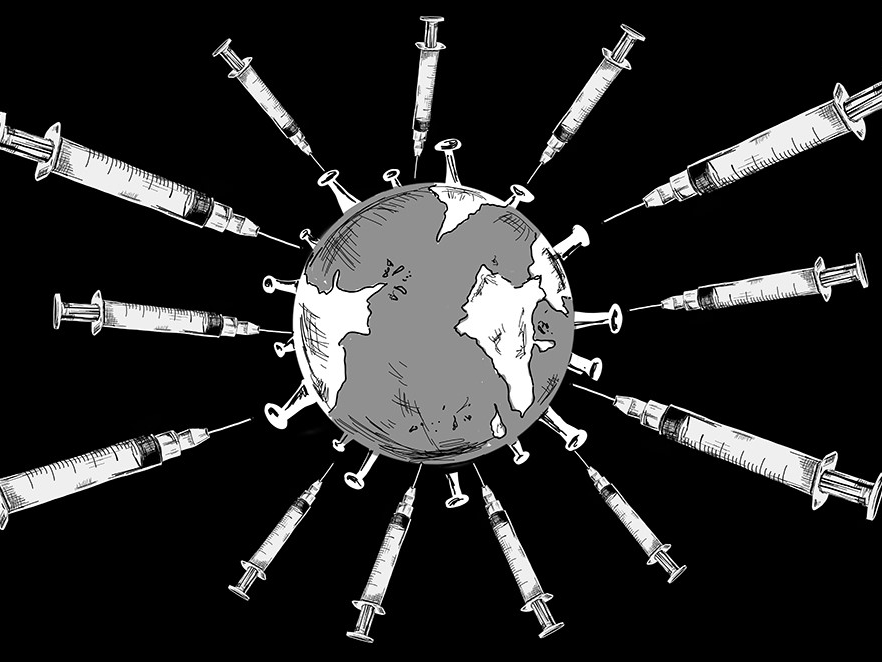It is always interesting to observe how market participants’ expectations and speculations often become self-fulfilling prophecies. Sadly, this is clearest when one has the benefit of a rear-view mirror, but whether it was the Asian Crisis of 1997, or the Global Financial Crisis of 2008, there have been multiple episodes where the market has seen the approaching train but failed to jump out of its path and avert the crash. The same holds true for the Egyptian economy, where macroeconomic imbalances and foreign exchange market distortions have been glaringly obvious since the Arab Spring, but it seemed as though Egypt would just stand there and wait to be crushed by the toxic combination of slowing growth, acute foreign currency shortages due to exchange rate system rigidity, and weak investor sentiment. On this occasion, however, what we appear to be seeing is a narrow escape, albeit by the smallest of margins.
In our previous edition, we published an exclusive interview with His Excellency Mr. Tarek Amer the Governor of the Central Bank of Egypt. He was clear that Egypt recognised it needed to find and implement a radical solution to its snowballing problems, notably those caused by the fixed exchange rate regime. The parallel market for foreign exchange had become a more important channel for hard currency liquidity than the banking system, and this affected investor appetite both due to the overvalued EGP and the limited ability to repatriate profits as a result of currency shortages. The gap between the official and parallel rates peaked at over 80% in October 2016 and it seemed as if the Egyptian economy was grinding to a halt.
The decision to liberalize the foreign exchange regime by floating the Egyptian Pound on 3rd November 2016 came as the Government recognized the need for action. This radical step aimed to attract back FDI, improve Egypt’s international competitiveness, restore access to foreign currency liquidity, and improve liquidity in the banking system. Floating the Pound was not the only part of the reform package. Egypt had been in talks with the IMF in the run up to the currency flotation, and on 11th November, 2016 the IMF’s Board approved a three-year US$12 billion Extended Fund Facility (“EFF”) for Egypt. The purpose of this IMF program is to help Egypt rectify its macroeconomic imbalances, enabling better monetary policy conditions, and restoring a well-functioning FX market. 9 months into the program, it feels to us on the ground that this reform program was not a “false dawn” and much progress has been achieved during the period since.
Growth has picked up, registering 4.3% y-o-y in the third quarter, and up from 3.8% y-o-y in the previous quarter. Growth has been driven by exports which more than doubled. Tourism revenues, which had been very badly hit, also strengthened, with tourist arrivals increasing by over 50% in 1H 2017. Almost 3.5 million tourists visited Egypt in the first half of this year, with tourist nights increasing to 37 million from the 13 million recorded in the first half of 2016.
Local consumption has been negatively impacted by the reform program. This is largely due to high inflation, which has been one of the key side effects of the reforms – currently running at c. 32%. It is typical to see high levels of inflation following an FX rate overshooting once a currency is floated. The CBE’s answer to the problem has so far been repetitive interest rate hikes – with the support and blessing of the IMF. The most recent rate hike took place in July 2017. With that rise, the overnight deposit rate reached 18.75% and the lending rate 19.75%, record highs for Egypt. The most recent rate hike brings the total increase in borrowing costs to 700 basis points since the flotation of the Egyptian Pound last November. This is clearly impacting appetite for credit in the private sector.
And there may yet be more rate hikes to come. An April 2017 statement from the IMF stated that interest rates are “the right instrument” to manage Egypt’s inflation. However, a key tenet of Egypt’s IMF program is also reducing subsidies on hydrocarbons, electricity, and water. The Government raised the price of electricity by around 42% for household consumers in July 2017. The move, which followed a similar increase to fuel prices one week earlier, has resulted in a fresh wave of inflation given the spill-over effects of raising the prices of energy on agriculture, food, and transportation. It appears that the IMF program has an inherent dichotomy – which is the need for swift removal of subsidies to improve public finances while keeping inflation in check.
However, the interest rate hikes coupled with a currency that our analysis suggests remains potentially undervalued has resulted in significant inflows into treasury bills and bonds since the Pound’s flotation – largely from foreign investors. With yields on T-bills and bonds reaching over 20% – the second highest across all EMs – international investors have started to invest heavily in Egyptian debt instruments, and the EGP “carry trade” has been one of the most popular strategies across EMs in 2017. Egypt has also now returned to the Eurobond market for the first time since 2005. In January 2017 Egypt’s US$4 billion multi-tranche international bond issuance was over 3x over-subscribed, and the Government capitalized on the momentum by completing a further US$3 billion follow-on issuance in May 2017. Sovereign reserves had increased to US$36 billion by July 2017, the highest level reached since the start of the Arab Spring in January 2011.
Another key component of the reform has been the successful implementation of VAT. VAT was introduced at 13% in 2016, and has since been hiked to 14% in July 2017. Tax reform is another important pillar of the IMF program for two reasons: (a) shoring up state revenues helps in cutting the budget deficit, and (b) implementing a VAT system is known to be a key tool for accelerating the formalization of the informal economy.
As one looks back, it would be fair to say that more reform has happened over the past 9 months than in the last decade. What is needed now is an environment that supports new investments into an economy that has a newly liberalized FX market (and a potentially undervalued currency), as well as an attractive demographic profile creating a sizeable consumer market. What is also needed to sustain the momentum of the reforms are policies to provide a social safety net for the needy, for indeed the lack of such policies was one of the key precipitating factors of the Arab Spring. It is encouraging to see that Egypt has recently rolled out a conditional cash transfer program called “Takaful and Karama” to ensure that the poorest segments of the country don’t bear the brunt of the ongoing reforms. This program (which shares many similarities with Brazil’s famous “Bolsa Familia” Program) has been relatively successful so far in providing important protections for the poor in the wake of high inflation. The program is currently covering c. 1.5 million families from the country’s poorest and most vulnerable segments, and the aim is to significantly widen that coverage over the next few years.
On 13 July 2017, the IMF Board completed its first review of Egypt’s economic reform program and gave the green light for a second disbursement of US$ 1.25 billion under the US$ 12 billion program. This coupled with the reserves built up and the international flows into government debt instruments are encouraging indicators that the Egyptian economy is recovering and restoring its credibility. However, on the ground it does feel that we are still in the storm before the calm… and that is mainly because of the inflationary impacts of the reforms on consumption and the general sentiment on the street.
The CBE expects inflation to drop to c.13% by the end of 2018 as base effects start kicking in later this year – but this feels like an optimistic projection. GDP growth for FY 2017/18 is expected to be c. 5%, and the FY 2017/18 budget targets a primary surplus for the first time in ten years. This is good news, but the key thing is to make sure that social stability is maintained while the impact of the reform storm recedes. By any economic standard, a flexible exchange rate regime that enables free repatriation of capital, a strong monetary policy framework, and a commitment to a continued fiscal adjustment and reform are all good things to applaud – and they are the right course of action for long-term prosperity… but as Keynes eloquently put it: “in the long-term we are all dead”…. so it important that Egypt keeps a finger on its short-term pulse as well as an eye on its long-term trajectory. With Presidential elections next year, it will be interesting to observe whether the Government will hold its course on the reforms, or whether there will be some reversion to populist policies to gain broader support from the street and the masses that have been badly hit by inflation.






